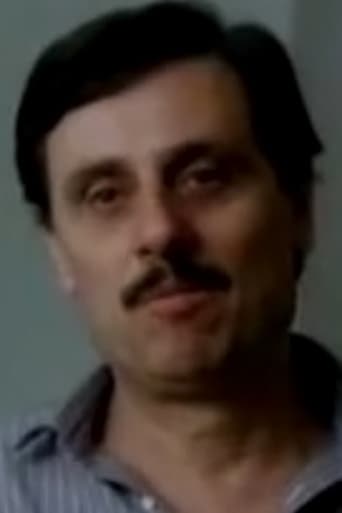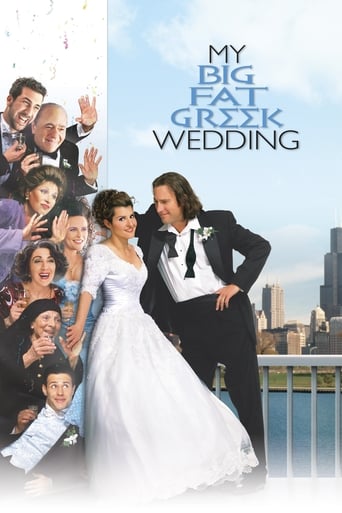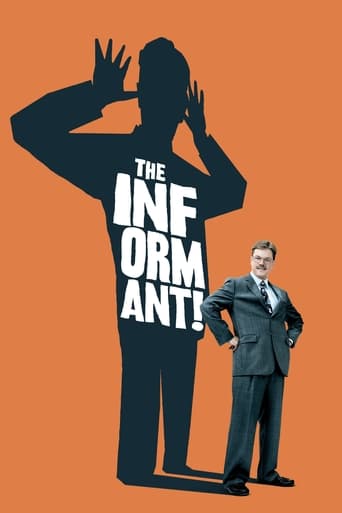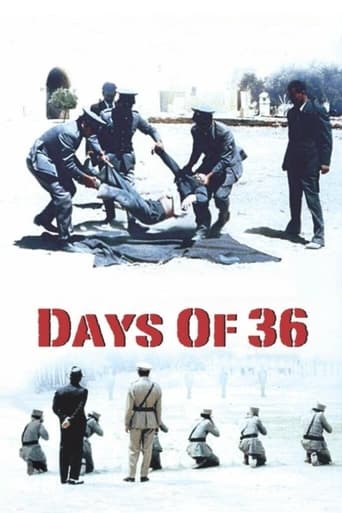
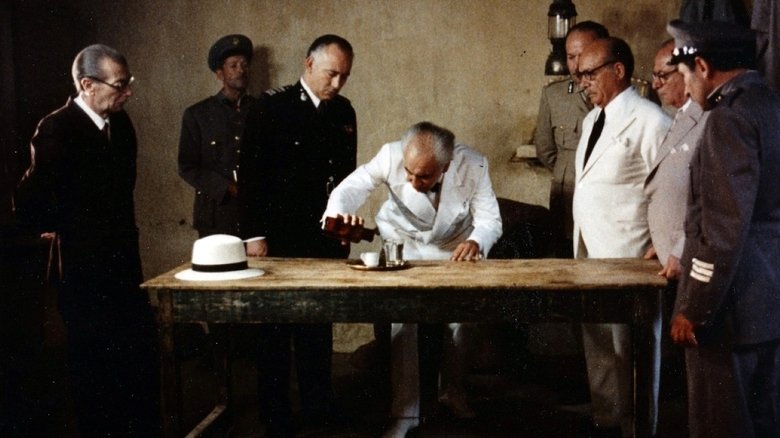
Days of '36 (1972)
The assassin of a prominent trade unionist takes a conservative MP hostage, throwing in the government into disarray.
Watch Trailer
Cast
Similar titles
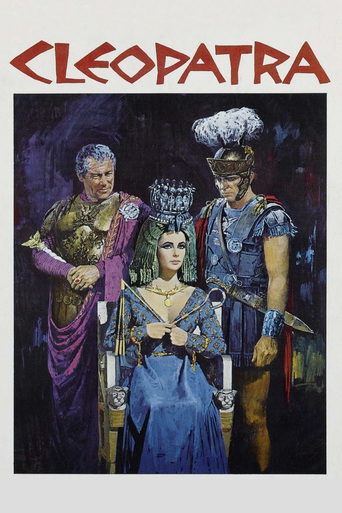
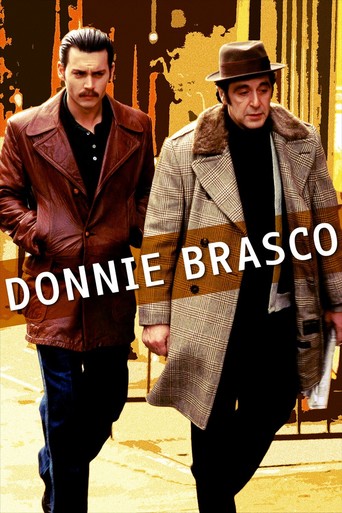

Reviews
Wow! What a bizarre film! Unfortunately the few funny moments there were were quite overshadowed by it's completely weird and random vibe throughout.
It's an amazing and heartbreaking story.
It's the kind of movie you'll want to see a second time with someone who hasn't seen it yet, to remember what it was like to watch it for the first time.
The thing I enjoyed most about the film is the fact that it doesn't shy away from being a super-sized-cliche;
Theodoros Angelopoulos was probably Greece's finest film maker. He had an eye for the artistic and went on to develop a style that others could never even hope to emulate, with long shots, clever and alluring angles and a kind of cinematic poetry. This is his second full length film being made in 1972. It tells the story of Sofianos who is a former drug trafficker and police informant who is arrested for the assassination of a Trade Union leader.Once in prison the local MP comes to his aid only to be taken hostage. What follows is how the authorities deal with the crisis - badly. Now this is set just prior to the Metaxas dictatorship but was made during the rule of the so called generals and as such there was censorship. So this is allegorical in terms of how it is taking a swipe at the incompetence of the authorities and the parlous state of liberty in Greece at that time.The downside is that this is very slow and more is left unanswered than is ever even asked – if that indeed makes sense. There are the long shots the great camera angles and a cast of non actors. Some of the acting is wooden and some of the scenes are painfully staged. I like to think that this is deliberate to show the unreality, mundanity or even futility of how life then was. For a modern audience though this will be a hard watch. The print is excellent and looks like it was made only last year not in 1972. If you are an aficionado of cinema then you will want to see this, I appreciated it for its vision and other aspects as described above but at times I struggled with the pace; that having been said it has stayed with me, hence my rating.
An even more difficult and abstract film than Angelopoulos' debut "Reconstruction", his 2nd feature deals with a man arrested after a political leader is assassinated. The man seems to have been part of the assassination plot, but it is left somewhat ambiguous what his role was, if any. In jail he takes prisoner of an official who may or may not also be his cohort. While the hostage situation is at the very center of the plot, we are never in the room with the two men, and never know quite what is or isn't going on between them.Tied directly to specific events in Greek history of 1936, when Greece fell into dictatorship (I suspect only a deeper knowledge of that history would have let me experience all the film's many levels),and made during the second period of dictatorship 30+ years later (and so had to be ginger in how blatant it's anti-government stance was) on the broader scope the film is about the desperate stupidity of power, seen here via the various odd ways in which those in power try to deal with the hostage crises; rendering them at first impotent, and then violent. The pace is very slow. This is a comparatively short film by the director's standards, but actually felt longer than some of his epics. Without an emotional center or any character(s) we can identify with, using all non-actors, many of whom give fairly stiff performances, the film teeters on the edge between fascinatingly enigmatic and simply frustrating and confusing. It's all a metaphor for a society going wrong, for the rise of fascism, but it's convolutions, distant performances, and (for Angelopoulos) naturalistic visual style never really allows us inside as his later, greater, more poetic, theatrical and emotional works do. But it is beautifully made, shot from always interesting angles. Angelopoulos had yet to fully embrace his trademark super-long, flowing elaborate takes, (often multi-minute mini-films within a film) but there is a step in that direction from "Reconstruction". "Days of 36" is a transitional film, as Angelopoloulos starts to find the voice that would lead to his masterpieces, starting with his next film, "The Travelling Players", where his intellectual rigor would be balanced by an incredibly cinematic vision, and a sense of loss and pain, so one is drawn deeply in, even as you occasionally get lost on a literal level. Not a great film, but an intellectually interesting one, and required viewing for anyone interested in the arc of the work of this great master of images. And I suspect, as with all this film-makers' dense films, I will only get more from it on repeated viewings.
"Days of 36" (1972) Dir: Theo AngelopoulosI was led to "Days of 36" after reading about "The Travelling Players", Theo Angelopoulos' first major international success, highly regarded as one of the key European epics of the last fifty years. But I decided to see "...36" first as the opening part of a trilogy that "...Players" continues and, by all accounts, elevates to something far greater. This is not to say that "Days of 36" is a weak beginning, it's anything but. It has an assured self-confidence in the slow, deliberate way it tells this very confined story: a man is arrested for the assassination of a trade unionist, after which he manages to hold a politician hostage in the prison. The warden, the minister and several prison guards attempt to diffuse the situation, aware that their response will have political reverberations beyond the isolated incident itself.The title is the only reference to the historical setting of the film, and no specific location is announced. The implications are clear; the viewer is assumed to know the significance of 1936 in Greek history. Whether this hostage taking really occurred or not, the incident is clearly supposed to be illustrative of a certain political and social situation that exists beyond the walls of the film itself. "Days of 36" is calm, patient and strikingly impersonal. The sun beats down constantly upon anonymous uniformed men as they stride from building to crack-walled building, delivering messages, rendezvousing and deftly carrying out clinical official functions. Much of the 'action' (I use the word generously) takes place within the confines of a dusty prison, far from the regular society we see very little of. The accused assassin's lawyer ventures out into the barren streets and derelict buildings to find out who brought the gun to his client in jail. He finds no answers among the vague network of dispersed criminals. Tellingly, we never find out if his client actually killed the trade unionist or not - he swears he fired into the air.The real point of the film is the minister's inability to end the situation without killing the hostage taker. He informs us that the Conservative Party and the Democratic Party are literally opposing each other on how best to deal with the situation, leaving the assembled team certain to upset at least one Party. When I found out that in 1936, Greece was on the cusp of its first period of 20th Century dictatorship, Angelopoulos' film made more sense - faced with a crucial problem that will affect the political balance of an unstable country, they decide to kill it. This film was made during Greece's second period of 20th Century dictatorship. I'll leave you to fill in the blanks.All this leaves me with the question: if I have to research historical context in order to understand a film, why do I judge it a success? Well, it uses the architecture and landscape to visually bolster some very effective sequences, usually shot in very long takes. A failed breakout from the jail is set against near silent, rolling cornfields, as is an execution scene. The inmates rattling the bars on their windows after music is played in the yard, only to be dramatically silenced by the guards firing rifles in the air, is another key scene. "Days of 36" is unapologetic and uncompromising in its static approach to a story devoid of any real human element. Glimpses of emotional depth are hinted at, then passed by. Once I settled into the pace, I was not going to stop watching until I found out how the siege ends, and when I did I felt a little indignant and blank - not at the film itself, but at the anonymous uniformed men carrying out these actions; cold and workmanlike ad infintum.
A deeply political film, the first of Theo's highly acclaimed trilogy (the other films being "O Thiasos" and "Oi Kynigoi"). It was filmed during the second dictatorship Greece suffered during the 20th century (1967-1974), the scenery of the film being the first dictatorship, 1936-1941. The main element is that of cleistophobia, a cleistophobia directly associated with constant and poignant political instability that leads society to an existential crisis. An important point is that, although we can roughly infer the time of the narration, no temporal indication is discernible in the film. The film swings between the historical and a- or super-historical, giving an essence of universality, while making a direct and compelling political comment.The scenery shown is limited.The place where the unionist was assassinated (by Sofianos ??), the landscape where the prison stands, a marina, a seaside resort, another open landscape, where an inauguration takes place, and the prison. The prison is the central place of the narration, carries and conveys a loaded symbolic. I would classify the scenery by the words intramural and extramural, the intramural being the scenery of the prison and the extramural that of the other places. All have a political function. The intramural being the place where the crisis of the plot evolves, the extramural being a complement to the dismemberment taking place in the intramural. The long shots give a theatrical effect and a documentary style at times. The film has a number of powerful scenes, of which i pick two out. The first is that of the music being played in the yard of the prison by request of Sofianos, giving rise to the second (less violent) prison riot. The second is the closing scene of the multiple execution, which completes a ring composition of assassinations at the beginning and at the end of the film, with death in a literal and in an abstract level being one of the main leitmotifs of the film.Interestingly, the film was awarded the first national prize in the Thessaloniki festival in 1972. No comment.


